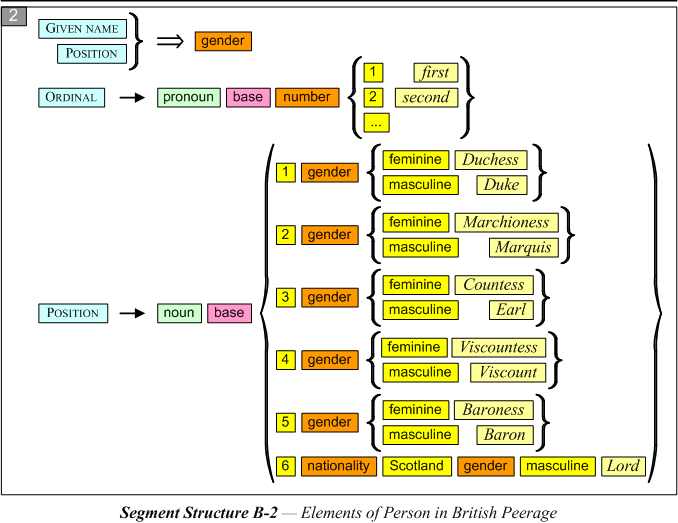1.10 A Grammar of British Peerage. Every noble person who possessed a peerage has certain elements that are appropriate to his title. The ones granted by the British monarchy may be found in a the Directory of British Peerages (Leeson).
In this directory each peerage is listed by name and cross referenced also by the surname, which in some cases is redundant being the same as the title name. The author notes that these names may be a personal name (held by a single person), a family name (surname), or the name of a house, e.g., Plantagenet, Winsor. The persons who were entitled to the peerage are not listed individually, but the span of years when it was carried by someone is given. Some peerages lasted only for the life of the person for whom it was created. When the peerage was heritable but no longer in possession of a noble, its disposition is indicated. The case when the position (rank) of the noble changes, the author gives no disposition, but it is clear from the context that the class is “promoted,” say from “duke” to “marquess.” Accordingly the rules of segment structure for the respective categories in this rule are as follows:

The next rule of phrase structure is for each individual having a peerage. This individual has a name followed possibly by the order, e.g., “Henry III.” These elements are not listed in the directory, but must be found in compiled genealogies and peerage books. The position and also the “territorial suffix” are listed in the directory as they were possessed by multiple persons through inheritance.

The date in the directory always marks the beginning or creation of the peerage. Sometimes, when the peerage still existed in 1984, the end date of the peerage is not given. These facts may be captured in phrase structure rules [PS3] and [PS4].
The territorial suffix is appended to virtually every peerage. There appear to be two kinds: early ones introduced by the Norman French preposition de and more modern ones using of. This preposition is sometimes designated as a “nobiliary.” The nobiliary is followed by one or more names of estates possessed and passed with the peerage from one person to another by inheritance. Normally such estates are accumulated by families before the peerage is created at which time they become attached to it. These facts may be described by phrase structure rule [PS5] and its related segment structure rules. Although we have not put a limit on the number of toponyms required to describe the territory, in practice it seems there are no more than four.

